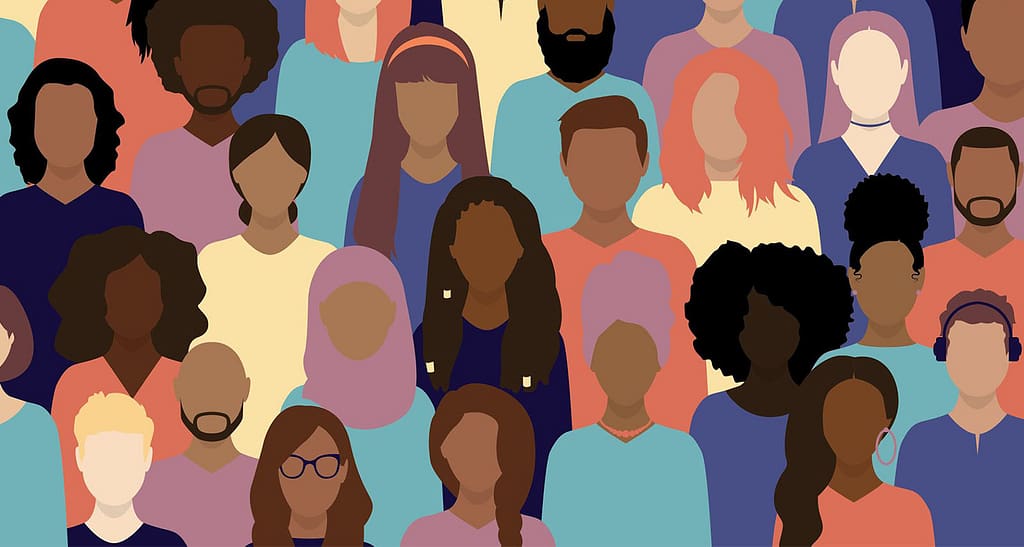
- Dr Daniel Bruneau
Facebook
Twitter
WhatsApp
Telegram
Email
AI and the Challenge to Remain Human
One Reality Is Living In The Artificial Reality Of The “You Can Be Like God” Lie Painted By Satan As A Way Of Discovering Life’s Meaning. The Other Is Living In The Awesome Reality Of God’s Eternal, Unbounded Love.

Global interest in Artificial Intelligence (AI) has surged in the last twelve months as a myriad of new AI technologies have roiled the marketplace, transformed content development, and created massive concerns among world leaders. This interest has been fueled in a significant way by the almost ubiquitous adoption of certain natural language-processing technologies, such as OpenAI’s ChatGPT, Jasper AI and Midjourney, to name but a few, that can understand and respond—in a conversational manner—to human natural language inputs with high accuracy and efficiency. AI is fundamentally changing how humans interact with technology, and its adoption is occurring at an unprecedented pace. (1)
Yet, in an unprecedented move, the very industry and research leaders who are at the forefront of developing these technologies recently published a collective statement strongly proposing that “mitigating the risk of extinction from AI should be a global priority alongside other societal-scale risks such as pandemics and nuclear war”. (2)
Is there a legitimate cause for concern that AI could someday cause the extinction of humanity?
The term Artificial Intelligence or AI was born during a summer school held in the mathematics department of Dartmouth University in 1956. At that time, AI was articulated quite simply as: “…the science and engineering of making intelligent machines”. (3)
Nearly 70 years later, AI is best understood within two core contexts: Narrow Artificial Intelligence (NAI) and Artificial General Intelligence (AGI). Narrow AI describes artificial intelligence systems designed to handle a limited task. Narrow AI, for example, may be used for spam email filtering, music recommendation services, and even autonomous vehicles. The quest for human intelligence represents Artificial General Intelligence (AGI). (4)
Indeed, this quest for human intelligence should give us cause for concern, though not because we face extinction because of a super race of hyper-intelligent robots. The Bible is clear on the endgame for humanity, depending on the path we choose: “For the wages of sin is death, but the gift of God is eternal life in Christ Jesus our Lord.” (5) The more significant concern arises from the original lie told to our first parents in Eden: “You will be like God.” (6) Satan cunningly inserted into our first parents’ minds the profound untruth that precipitated humanity’s fall. Undoubtedly, he continues to peddle that lie today—sometimes with the aid of AI.
This lie saturates the thinking of those envisioning perhaps the most dangerous movement in the quest for Artificial General Intelligence, that of Transhumanism.
In his book To Be a Machine, Mark O’Connell states that “It is their (Transhumanists) belief that we can and should eradicate ageing as a cause of death; that we can and should use technology to augment our bodies and our minds; that we can and should merge with machines, remarking ourselves, finally in the image of ideals.” (7)
John Gray, author of Seven Types of Atheism, is enlightening on this matter: “Contemporary atheism is a continuation of monotheism by other means. Hence the unending succession of God-surrogates, such as humanity and science, technology, and the all-too-human visions of transhumanism.” (8)
In the simplest terms, Satan desires the role of usurping the position of God so that we will worship him instead of God the Creator. (9) He accomplishes this in the most cunningly effective way by advancing the “you will be like God” lie through every possible medium, appealing to the vanity and pride that has taken hold of humanity since our fall. In this age, we are being told that we can create ‘better’ humans through technology. It’s the grandest of rouses and a replay of an ancient lie.
Indeed, following this path, as John Lennox states in his book 2084: Artificial Intelligence and the Future of Humanity, will “neither lead back to God nor lead to God, but rather to the greatest rejection of God the world has ever seen”. (10)
The bottom line is this: the Transhumanism movement presents yet another opportunity in our existence where we have a choice of two realities with which we must contend. One reality is living in the artificial reality of the “you can be like God” lie painted by Satan as a way of discovering life’s meaning. The other is living in the awesome reality of God’s eternal, unbounded love.
John Lennox’s succinct conclusion puts the contrast in sharp focus: “The wonder is that we can, if we desire, become part of this unending story, and live in eternal fellowship with the infinitely, intelligent, and compassionate Saviour, Jesus Christ the Lord. Nothing artificial can compare with that reality.” (11)
____
(1) https://www.nature.com/articles/s41586-023-06094-5
(2) https://www.safe.ai/statement-on-ai-risk
(3) John McCarthy, “What Is Artificial Intelligence?” www formal.standford.edu/jmc/whatisai.pdf
(4) https://mindmatters.ai/2022/10/oxfords-john-lennox-busts-the-computer-takeover-myth/
(5) Romans 6:23 – Taken from the New King James Version®. Copyright 1982 by Thomas Nelson.
(6) Genesis 3:5 – Taken from the New King James Version®. Copyright 1982 by Thomas Nelson.
(7) Mark O’Connell, To Be a Machine: Adventures among Cyborgs, Utopians, Hackers, and the Futurists Solving the Modest Problem of Death (New York: Anchor, 2017)
(8) John Gray, Seven Types of Atheism (New York: Farrar, Straus and Giroux, 2018),158
(9) Manuscript Releases 8:346 (1901)
(10) John Lennox, 2084: Artificial Intelligence and the Future of Humanity, Zondervan, 2020
(11) Idem
Dr Daniel Bruneau is the Director of Experience Design and Innovation for the Adventist Review, General Conference of Seventh-day Adventists in Silver Spring, Maryland, USA. He also heads up an innovation studio called The Experience Foundry. He holds a PhD in Human-Technology Interaction and resides with his wife and two little girls in Georgia, USA

How Should Christians be Different?
September 6, 2023

The Pastoral Caregiver – Bearer of Stories
September 6, 2023

What Takes to be Different?
September 6, 2023

The Beauty of Diversity Within the Body of Christ
September 6, 2023

The Butterfly, an Object Lesson of Transformation
September 6, 2023

Mitigating the Risks of Cultural Compromises
September 6, 2023

Embracing Christ-Centered Counterculture
September 6, 2023








